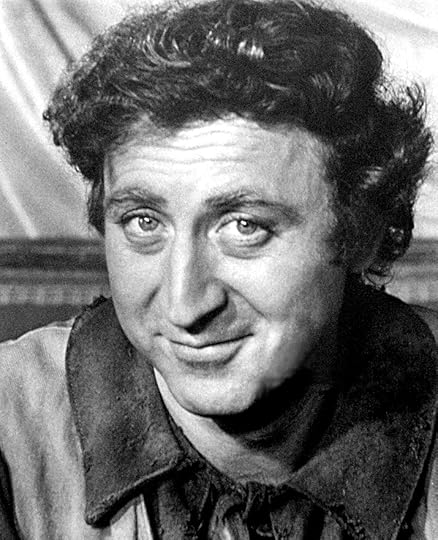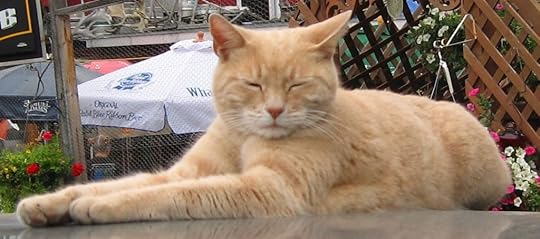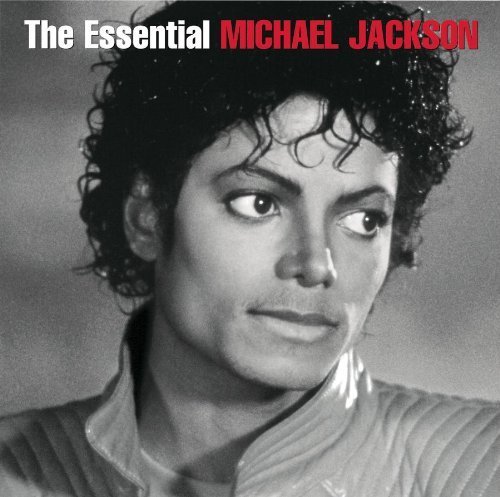Bathroom Readers' Institute's Blog, page 77
August 31, 2016
Weird Animal Poop News
Birds do it, bees do it. By which we mean eats food and turns it into, uh, solid waste material. But we humans are the only species that can gain amusement from the droppings of other animals, and since we are the people who bring you Uncle John’s Bathroom Reader, here are the latest scoops in animal poop.
Remnants of Another Time
George Frandsen is an avid and voracious collector of coprolite. In fact, in 2015 Guinness World Records declared his collection to be the largest in the world. At the time, Frandsen had 1,200 pieces, but he says that number has now more than doubled. So what’s a coprolite? Ancient fossilized animal dung. Frandsen has decided to share his pieces of fossilized feces with the world: He’s opened a museum called The Poozeum. Sorry, this isn’t a hands-on museum—it’s entirely online. You can go there right now and check out thousands of pieces of poop from millions of years ago, left as relics by bugs, animals, and even dinosaurs. The star attraction of The Poozeum: “Precious,” an eight inch-long, four-pound turd generated by a large crocodile-like creature. It’s the largest coprolite ever discovered.
Rise of the Robots
If there’s one thing we love at the BRI as much as weird animal poop stories, it’s weird robot stories. This one is both. Until August 2016, Jesse Newton of Little Rock, Arkansas, relied on his trusty Roomba robotic vacuum cleaner to keep his floors tidy. Every night, while Newton and his family blissfully slept, the Roomba was programmed to quietly clean around 1 a.m. The Newtons were also blissfully unaware that their dog left a surprise on the living room rug, sometime between when the family went to sleep and when the Roomba sprung into action. In a Facebook post that went viral, Newton described in graphic detail what happens when a Roomba runs over and through a fresh dog turd. In what Newton called both a “Pooptastrophe” as well as a “poohpocalypse,” the Roomba “spread the dog poop over every conceivable surface within its reach, resulting in a home that closely resembles a Jackson Pollock poop painting.”
There are More Accessible Bathrooms
In 2015, a 700-foot-tall construction crane sat idle outside of the Air Canada Centre arena in downtown Toronto. When the operator, Robert MacFarlane got to work one morning, he noticed that someone had beat him to the job: a raccoon who had fearlessly climbed all 700 feet up the piece of machinery. And once the raccoon got there, MacFarlane notes, he defecated. And then he climbed back down.
The post Weird Animal Poop News appeared first on Trivia Books and Facts | Uncle John's Bathroom Reader.
August 30, 2016
Lightning Strikes Kill Hundreds of Reindeer
That headline is not a joke. There’s something weird going on in Scandinavia that involves reindeer, and unfortunately it doesn’t involve Santa, red noses, or delivering presents to all the children of the world.
Here’s a freak story of the powerful effects of weather and electricity. A recent thunderstorm in Norway killed 323 reindeer (including 70 calves) making it one of the deadliest lightning strikes in recorded history. (Ironically, the bodies of all those poor deer were discovered in the remote southern Norwegian region of Hardangervidda by a group of deer hunters.)
While being struck by lightning is a real fear for people, most humans (and certainly no animals) have any idea that it strikes other living things, too. Animals as varied as seal pups, elephants, giraffes, and turkeys have all been reported to have been struck down by electricity by the sky.
The reason why so many animals can get struck by lightning at the same time is because the victims were herd animals. Reindeer, like sheep (or elephants, or turkeys), tend to group, or self-herd. If a storm is gathering in the sky, and rains start and thunder rumbles, a few of the animals will head for shelter under trees, and the rest will at least try to follow. If the lightning strikes that tree—as lightning is wont to do—or even near the tree, it can shock everyone huddled closed together. This is due to ground current. After the bolt hits the ground (or an animal), it travels along the surface of the ground, and to other victims. It’s extremely common for groups of 10 to 20 sheep or deer to get killed by a single blast of lightning—but not hundreds.
Amazingly, this isn’t even the deadliest example of widespread death of animals from lightning. In 1918, a herd of 654 sheep on Mill Canyon Peak in Utah were all struck.
The post Lightning Strikes Kill Hundreds of Reindeer appeared first on Trivia Books and Facts | Uncle John's Bathroom Reader.
The Only Dog Breed in the World That…
Of course, every dog is special—especially yours. But the following dog breeds are truly one of a kind.
Has a Nose That Can be Used in Court
Bloodhounds, of course. They’re so good at following a scent—either to people or pieces of evidence—that whatever they find is admissible in criminal cases throughout the United States.
Doesn’t Bark
The Basenji can whine, chatter, and make a sound very similar to yodeling, but it cannot bark.
Has a Split Nose
The rare Turkish breed called the Catalburun looks like a basset hound, only bigger. Also differentiating it from other dogs: It’s the only one with a split nose. It’s halved right down the middle, with one nostril on each half.
Doesn’t Have a Pink Tongue
The fluffy, squishy-based Chow Chow originated in China. It’s the only dog in the world that doesn’t have pink lips and a pink tongue. Instead, it’s more of a purple shade.
Originated in Texas
The Blue Lacy was bred in the mid-19th century by Texas brothers George, Ewin, Harry, and Frank Lacy. (It’s a mix of greyhound, scenthound, and coyote.) It was bred to be a good ranch dog, and was made the official state dog of Texas in 2005.
Is Named After a Fictional Character
The breed that is. The Dandie Dinmont Terrier is a small white terrier resembling a Scottie dog, but with the addition of a ball of hair on top of the head. They’re rare and bred mostly in the U.K. The name comes from Sir Walter Scott’s 1815 adventure novel Guy Mannering. The book has a character named Dandie Dinmont, based on a real-life individual named James Davidson, who created the breed.
Blushes
Dogs have a lot of ways to show that they’re excited. Some bark, some jump all around, and some drool more than usual. The pointy-earned, Malta-originated Pharaoh Hound is the only dog whose faces get a little red.
The post The Only Dog Breed in the World That… appeared first on Trivia Books and Facts | Uncle John's Bathroom Reader.
August 29, 2016
So Long, Gene Wilder
Beloved comic actor and writer Gene Wilder passed away this week at age 83. Here’s some stuff you may not have known about “Dr. Frankenstein,” “The Waco Kid,” and “Leo Bloom.”
Wilder portrayed the title character in Willy Wonka and the Chocolate Factory, but he doesn’t appear until about halfway into the movie. Suspense and mystery is built to the moment, at which point the gates to the Wonka factory open, and Wilder appears in a purple coat, walks with a limp, and does a somersault. Those actions were Wilder’s idea, and he actually refused to take the role unless he could do the scene that way. His reason: That way the characters (and the audience) could never be sure if he was lying or telling the truth.
Wilder was nominated for an Academy Award just twice: once for Best Supporting Actor for The Producers and once for co-writing the screenplay for Young Frankenstein. He lost the former to his Willy Wonka co-star Jack Albertson (for The Subject War Roses) and the latter to The Godfather, Part II. (Because it was a parody of old Frankenstein movies—an idea he pitched to collaborator Mel Brooks on the set of Blazing Saddles—it was lumped into the “Adapted Screenplay” category.)
Wilder was married four times. His third was the most famous, to Saturday Night Live star Gilda Radner until her death from cancer in 1989. Two years later he married Karen Boyer, a speech pathologist. They met on the set of See No Evil, Hear No Evil (his third team-up with Richard Pryor, after Silver Streak and Stir Crazy). Wilder played a deaf man, and Boyer coached him on how to portray him properly.
His last major role was a short-lived 1994-95 sitcom called Something Wilder, the actor semi-retired from acting. He said in a 2008 interview that he realized, “I don’t like show business. I like show, but I don’t like the business.” His last roles were a 2003 guest spot on Will and Grace and did a voice for the kids’ show Yo Gabba Gabba! last year. He kept busy in the later years of his life painting watercolors and writing novels.
The post So Long, Gene Wilder appeared first on Trivia Books and Facts | Uncle John's Bathroom Reader.
August 26, 2016
Ask Uncle John Anything: This Blog Post is Artificially Flavored
Uncle John knows pretty much everything—and if he doesn’t, he heads his massive research library, or puts one of his many associates on the case. So go ahead: In the comments below, ask Uncle John anything. (And if we answer your question sometime, we’ll send you a free book!)
Why do some imitation flavors, particularly banana, taste nothing like the real thing?
All banana-flavored things—taste the same. All watermelon candies taste the same as each other. But they don’t, respectively, taste anything like actual bananas or actual watermelons. And this seems to be a widely accepted notion. But with all of the technology we have today, particularly in food science, how come some artificial flavors don’t taste anything like the thing they’re supposed to taste like?
It comes down to oil. Many flavors were originally derived from naturally occurring oils. Packaged coconut cakes could taste like real coconut because they were made with coconut oil, or orange oil could be used to make very-orangey orange candies. But as food science developed, it became cheaper to re-create those oils in a lab by breaking them down into their chemical counterparts, synthesizing them, and reproducing them in massive, shelf-stable quantities. (Commonly used chemical ingredients in flavors include citric acid and isoamyl acetate.)
The process is a lot trickier with fruits that don’t provide oil. There’s no such thing as banana oil, for example. (In fact, in the early 20th century, “that’s a bunch of banana oil” was a slang term that meant “what a load of b.s.!”) Food scientists had to approximate the flavors of the fruit—or the suggestion of them—as best they could. But oddly enough, early banana flavorings did nail the real taste of banana. We just wouldn’t know. Currently, the kind of bananas available in stores almost universally is the Cavendish variety. Before that kind was cultivated, the most popular (and equally universally sold) variety was Gros Michael, until it was almost completely eradicated by plant-based diseases. It’s now obscure and grown in small quantities in a few tropical climates. And if you ate one, you’d find that it reportedly tastes a lot like artificially-banana-flavored candy.
The post Ask Uncle John Anything: This Blog Post is Artificially Flavored appeared first on Trivia Books and Facts | Uncle John's Bathroom Reader.
August 25, 2016
3 Failed Restaurant Spinoffs
We usually associate the word “spinoff” with TV shows—Frasier was a spinoff of Cheers, or Laverne & Shirley was a spinoff of Happy Days, for example. But it’s an idea used in the world of restaurants, too. Or at least it was—as these three spinoffs of a very famous fast food brand all flopped.
Ollie’s Trolleys
Another KFC spinoff: a 1970s chain called Ollie’s Trolleys. Tiny restaurants housed in mock-streetcars, they offered only walk-up service, meaning there was no inside seating, jut a couple of benches. Ollie’s (named for a John Y. Brown business associate named Ollie Gelichenhaus) sold a limited menu of hot dogs, fries, milkshakes, and the Ollieburger, billed as “the world’s best hamburger” because it was seasoned with “23 special herbs and spices.” More than 100 little Ollie’s Trolley locations popped up in major cities on the East Coast by 1976. Almost all of them shut down by 1980—unable to compete with Burger King and McDonald’s. Today, three independently owned and operated Ollie’s Trolleys are still open in Cincinnati, Louisville, and Washington, D.C.
Kentucky Roast Beef and Ham Restaurants
Kentucky Fried Chicken was the fastest-growing restaurant chain the late ‘60s, prompting company owner John Y. Brown (who purchased it from Colonel Harland Sanders, and who would later be the governor of Kentucky) to expand…into side businesses. Brown thought that using “Colonel Sanders” branding could sell anything, not just chicken, so in 1967 he opened more than 100 Kentucky Roast Beef and Ham restaurants. Almost identical to Kentucky Fried Chicken in every way, the only difference was that they sold slow-roasted beef and country ham instead of fried chicken. Every single one closed down by 1970.
KFC Eleven
Inspired by the rise of “upscale” fast food restaurants like Chipotle, in 2013 Kentucky Fried Chicken tested a new restaurant called KFC Eleven. Named for the “11 herbs and spices” in its fried chicken recipe, the restaurant didn’t offer the regular KFC fare, but instead had flatbread sandwiches, rice bowls, and salads, all including boneless KFC chicken. The company opened up one location in Louisville as a test in August 2013. It closed less than two years later, and no more KFC Elevens ever materialized.
The post 3 Failed Restaurant Spinoffs appeared first on Trivia Books and Facts | Uncle John's Bathroom Reader.
August 23, 2016
5 Animal Mayors
If you think this year’s presidential election has brought out people’s animal instincts, then you probably don’t live in a town that elected an actual animal to be its mayor.
Stubbs
In 1997, the manager of Nagley’s General Story in Talkeetna, Alaska (population: 876) found a box of abandoned kittens in the store’s parking lot and took a liking to a light orange one that didn’t have a tail. She named it Stubbs, and three months later Stubbs was named honorary mayor of the tiny district. The now 19-year-old cat mayor receives about 30 visitors each day, and every afternoon goes to one of Talkeetna’s few restaurants and drinks catnip-infused water out of a wineglass.
Goofy, Junior, Lucy Lou
It started as a fundraiser for a church in Rabbit Hash, Kentucky, but in 1998 the town of 315 wound up naming a dog its honorary mayor. In a mock election, townsfolk paid a dollar each to “vote” and could vote as many times as they wanted to. In the end, more than 8.000 people voted for Goofy, a parishioner’s German Shepherd. He served three years until he died in 2001 at the age of 16. Electing dog mayors became a tradition in Rabbit Hash—in 2004 a black Labrador named Junior became mayor. When he died in 2008, a border collie named Lucy Lou won the special election.
Duke
In August 2016, the town of Cormorant, Minnesota re-elected its mayor to a third term. That mayor is Duke, a dog of the Great Pyrenees breed that first won the office in 2014 as a write-in candidate (he won with 12 votes), and then won another term in 2015. This is not an “honorary” position, either: Duke the dog is legally the mayor of this Minnesota town of 1,039 people.
The post 5 Animal Mayors appeared first on Trivia Books and Facts | Uncle John's Bathroom Reader.
5 Weird Things From the 2016 Summer Olympics
They’ve closed up shop in Rio, and all we’re left with are the memories…and these oddities specific to this year’s Olympics.
Swimmers and divers skilled enough to compete in the Olympics are probably the least likely people on Earth to drown in a pool, and yet at the Rio Olympics they were watched over by lifeguards. Under Brazilian law, large swimming pools are required to have a lifeguard present. More than 70 were hired for the Olympics.
Remember back when Olympic athletes who won a medal were given a bouquet of flowers as they stood on the podium to receive their gold, silver, or bronze? It’s a thing of the past. At the Rio Olympics, flowers were scrapped as organizers deemed them wasteful and unsustainable. Instead, athletes received a little trophy consisting of a green base and multi-colored arches—a three-dimensional rendering of the two-dimensional logo of the 2016 Olympics.
Race-walking is an Olympic event. It’s different from running—walkers must have one foot on the ground at all times or risk disqualification. Nor is it easy: Olympic race-walking involves a 50-kilometer course. French race-walker Yohann Diniz came in seventh out of 48 athletes, averaging a speed of 8.24 miles per hour. Even more impressive: Diniz’s body broke down along the way. During the walk (in 81 degree heat), he suffered from a spontaneous case of diarrhea, and then blacked out…then got back up and finished the race.
Mongolian wrestler Ganzorigiin Mandakhnaran almost made to the medals podium as the bronze finisher, until officials penalized him after his last match for intentionally avoiding his opponent for 18 seconds. Mongolian wrestling team coaches Serenbaatar Tsogtbayar and Byambarenchin Bayaraa were so incensed…that they stripped off all of their clothes and sat down on the wrestling mat in protest.
Japanese high jumper Hiroki Ogita could’ve won a medal in his event. But during a qualifier, he unfortunately grazed and knocked down the bar, disqualifying him immediately. Or at least part of him did—his, uh, male part.
The post 5 Weird Things From the 2016 Summer Olympics appeared first on Trivia Books and Facts | Uncle John's Bathroom Reader.
August 22, 2016
Random Bits on Michael Jackson Hits
If you find this page bad and not a thriller, Uncle John respectfully suggests that you beat it.
“You Are Not Alone”
Released in 1995, it was the first song ever to debut at #1 on the Billboard Hot 100 chart.
“Scream”
Jackson was a devout Jehovah’s Witness and steadfastly refused to use profanity. “Scream,” a duet with his sister Janet Jackson, is the only time he ever swore in a song: “Just stop messing with me / just stop f***ing with me / make me want to scream.”
“Thriller”
Horror movie legend Vincent Price recorded his spoken- word interlude in just two takes. Songwriter Rod Temperton wrote it in a taxi on the way to Price’s recording session.
“Bad”
Jackson planned it as a duet with Prince. Prince backed out over lyrical content. (He was reportedly uncomfortable with the song’s first line, “Your butt is mine.”)
“I Just Can’t Stop Loving You”
Another duet for the Bad album, which Jackson wrote to perform with Whitney Houston. She had recorded three hit duets with Jackson’s brother Jermaine, but turned this one down. So did Barbra Streisand. Who got the gig? An unknown backup singer named Siedah Garrett, who also co-wrote “Man in the Mirror” with Jackson.
“Wanna Be Startin’ Something”
Jackson was sued for stealing the song’s African-influenced chorus from the 1972 landmark disco song “Soul Makossa” by Cameroonian saxophonist Manu Dibango. (They settled out of court.)
“Beat It”
Eddie Van Halen played the song’s guitar solo as a favor to producer Quincy Jones. He was uncredited and unpaid for his work, apart from the two six-packs of beer Jones gave him during the recording session.
The post Random Bits on Michael Jackson Hits appeared first on Trivia Books and Facts | Uncle John's Bathroom Reader.
4 Sports Rules Changed Because of Specific Players
Every so often a pro athlete is so good at their sport that even though they play by the rules, the league has to change those rules so it’s fair to the other players.
In Major League Baseball, 1968 was known as “The Year of the Pitcher.” In the National League, Bob Gibson went 23-9 (including 15 straight) with a record 1.12 ERA along with 268 strikeouts. In fact, pitchers the ERA for the entire National League had an ERA of just 2.99. Batters just didn’t have a chance in the late ’60s. To literally even the playing field, Major League Baseball lowered the pitcher’s mound from 15 inches to 10 inches. Result: In 1969, Gibson’s ERA shot up to 2.18 and he amassed a 20-13 record.
Have you ever noticed the trapezoid painted on the ice behind each team’s net? Those have only been part of the game since 2005, and it defines the area in which a goalie is allowed to handle the puck, including with their stick. The NHL came up with the rule to limit the above-average abilities of New Jersey Devils goaltender Martin Brodeur. His stickhandling was reportedly far superior to that of most goalies, and so he’d frequently move far away from the net and act as a third defenseman.
After shooting a free throw in an NBA game, the shooter is not allowed to cross the foul line (where they take the shot) until the ball hits the rim. Why? The NBA made that a rule because of Wilt Chamberlain, and Wilt Chamberlain alone, was so big and so fast that if he missed a free throw (which he did 49 percent of the time) he could leap from the foul line to rebound his own shot and dunk it.
In the 1990s, NBA coach Don Nelson pioneered a unique defensive strategy: He instructed his players to intentionally foul the other team’s big players who scored often by barreling their way to the net, but who were terrible free throw shooters. The strategy became well known as “Hack-a-Shaq”: teams would intentionally foul Shaquille O’Neal almost any time he got the ball during a close game…and more often than not he missed his free throws. It’s a little unsportsmanlike and adds a lot of time to a game, but it was technically legal. O’Neal is retired now, but the NBA will try to limit “Hack-a-Shaq” in the 2016-17 season. Intentional fouls committed in the last two minutes of any period (or overtime) will earn the fouled player just one shot instead of two…and they get the ball back after.
The post 4 Sports Rules Changed Because of Specific Players appeared first on Trivia Books and Facts | Uncle John's Bathroom Reader.














